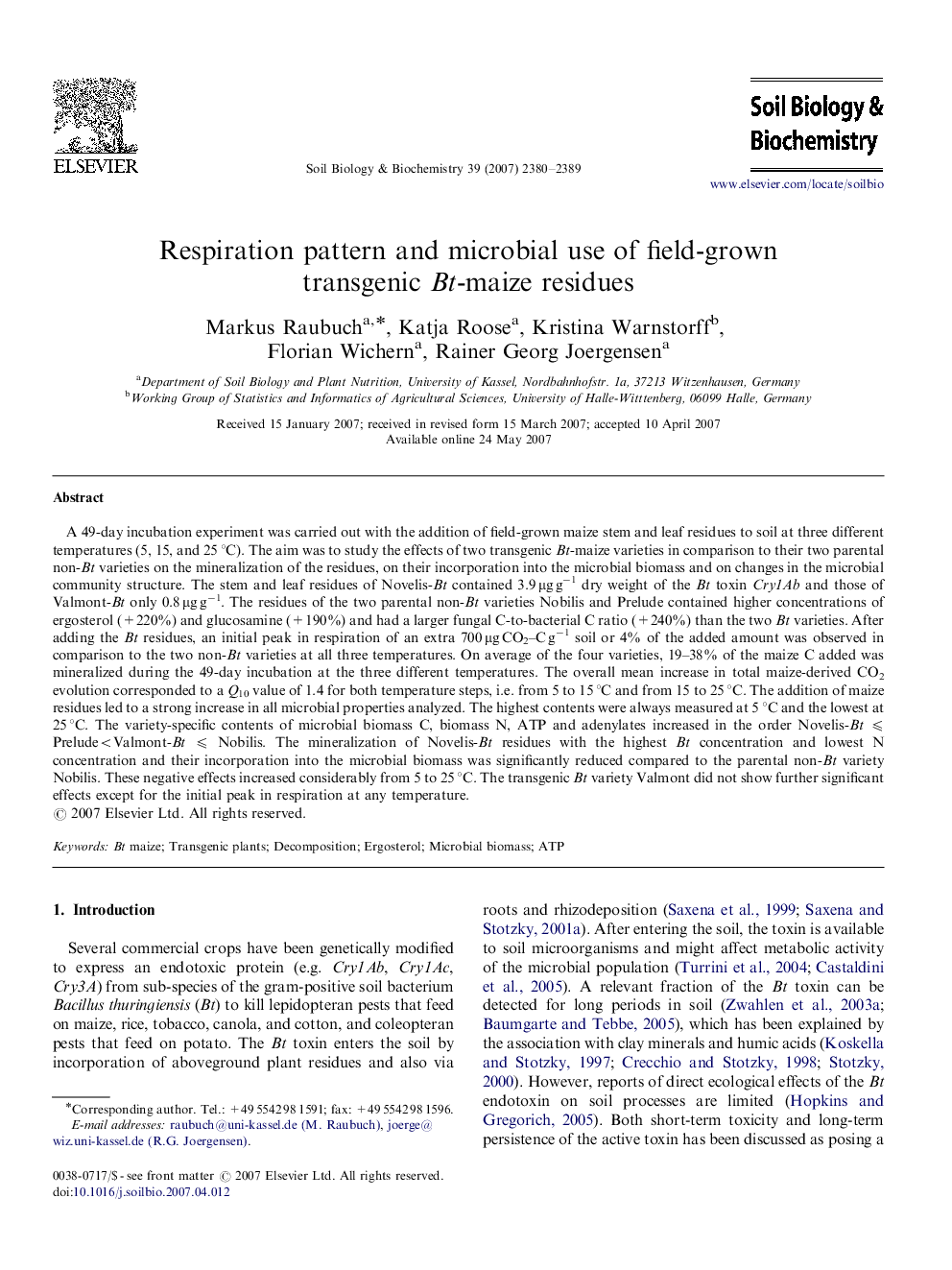| Article ID | Journal | Published Year | Pages | File Type |
|---|---|---|---|---|
| 2026193 | Soil Biology and Biochemistry | 2007 | 10 Pages |
A 49-day incubation experiment was carried out with the addition of field-grown maize stem and leaf residues to soil at three different temperatures (5, 15, and 25 °C). The aim was to study the effects of two transgenic Bt-maize varieties in comparison to their two parental non-Bt varieties on the mineralization of the residues, on their incorporation into the microbial biomass and on changes in the microbial community structure. The stem and leaf residues of Novelis-Bt contained 3.9 μg g−1 dry weight of the Bt toxin Cry1Ab and those of Valmont-Bt only 0.8 μg g−1. The residues of the two parental non-Bt varieties Nobilis and Prelude contained higher concentrations of ergosterol (+220%) and glucosamine (+190%) and had a larger fungal C-to-bacterial C ratio (+240%) than the two Bt varieties. After adding the Bt residues, an initial peak in respiration of an extra 700 μg CO2–C g−1 soil or 4% of the added amount was observed in comparison to the two non-Bt varieties at all three temperatures. On average of the four varieties, 19–38% of the maize C added was mineralized during the 49-day incubation at the three different temperatures. The overall mean increase in total maize-derived CO2 evolution corresponded to a Q10 value of 1.4 for both temperature steps, i.e. from 5 to 15 °C and from 15 to 25 °C. The addition of maize residues led to a strong increase in all microbial properties analyzed. The highest contents were always measured at 5 °C and the lowest at 25 °C. The variety-specific contents of microbial biomass C, biomass N, ATP and adenylates increased in the order Novelis-Bt ⩽ Prelude
